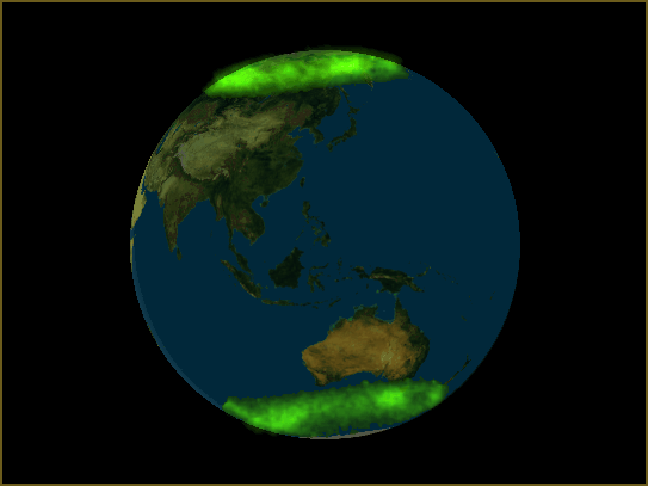|
|
||
 Credit: NASA Polar Mission |
||
|
pic of the day Links:
Society for
|
Aug 26, 2004 The nature of auroras was the subject of a debate that began early in the 20th century. But later in the same century, our space probes settled the debate in favor of the electrical theorists Kristian Birkeland and Hannes Alfvén. One of the conflicts in early 20th Century astronomy was between Sydney Chapman and Hannés Alfvén. Alfvén, following Birkeland's lead, believed the auroras to be powered by charged particles from the Sun. Chapman developed a mathematically elegant theory showing that the auroras were generated entirely in the Earth's magnetosphere by buffeting of the solar wind. Chapman refused to give Alfvén's ideas a hearing. At conferences, rather than address particular points of the theory, Chapman would state that he and his colleagues disagreed with Alfvén and that a paper explaining it all was in process. On one occasion, when Chapman was a guest of Alfvén's in Sweden, Alfvén built a replica of Birkeland's terrella experiment, which produced auroras on a magnetized sphere suspended in a vacuum. Alfvén hoped that if Chapman could see how plasma behaves in the laboratory, he would be more amenable to discussing it. Chapman refused to look at the experiment. But eventually, in the late 60's and early 70's, space probes did show that Birkeland and Alfvén were right -- the auroras are caused by charged particles flowing from the Sun. Solar plasma does enter the Earth's magnetospheric bubble. And today we have websites that monitor solar observations and predict when and where to look for auroras. During a geomagnetic storm in 2001, the Polar Mission took the above photos (see link to view the video version) of the north and south auroras at the same time, here projected on a globe. This project showed that the two phenomena brighten and dim together as a near-mirror image.
This shows that the Earth is no longer an isolated
body in space. It is connected to the circuitry of the Sun, and from
there to the circuitry of the galaxy and beyond. It provides us with a
preview of the discoveries of the future. |
|
|
Copyright 2004: thunderbolts.info |
||
